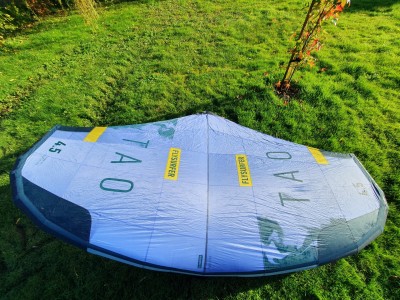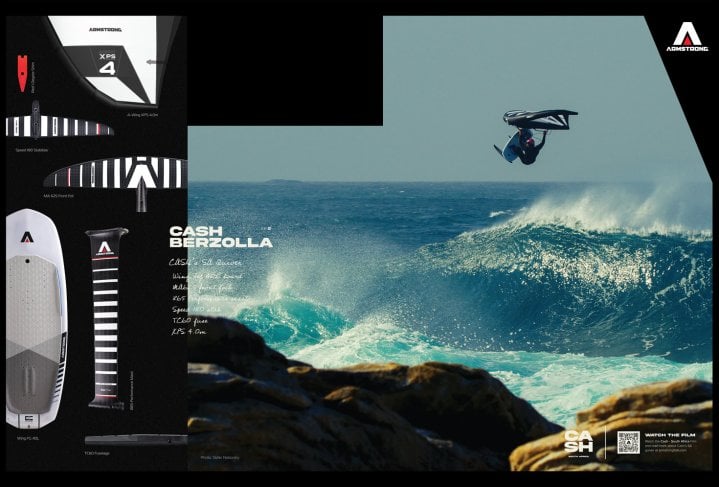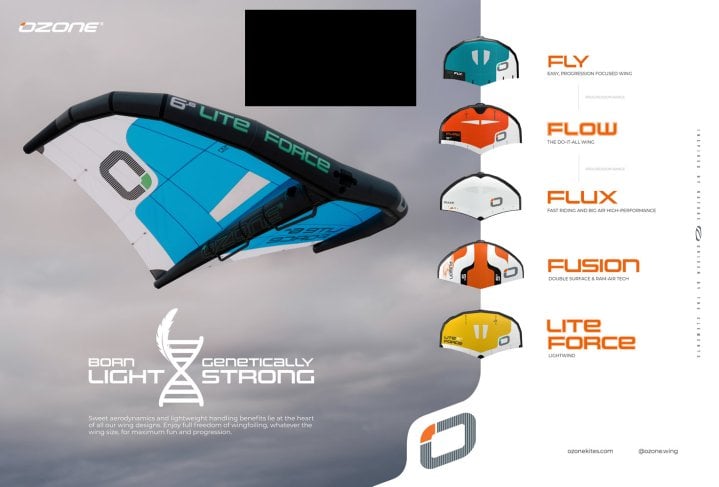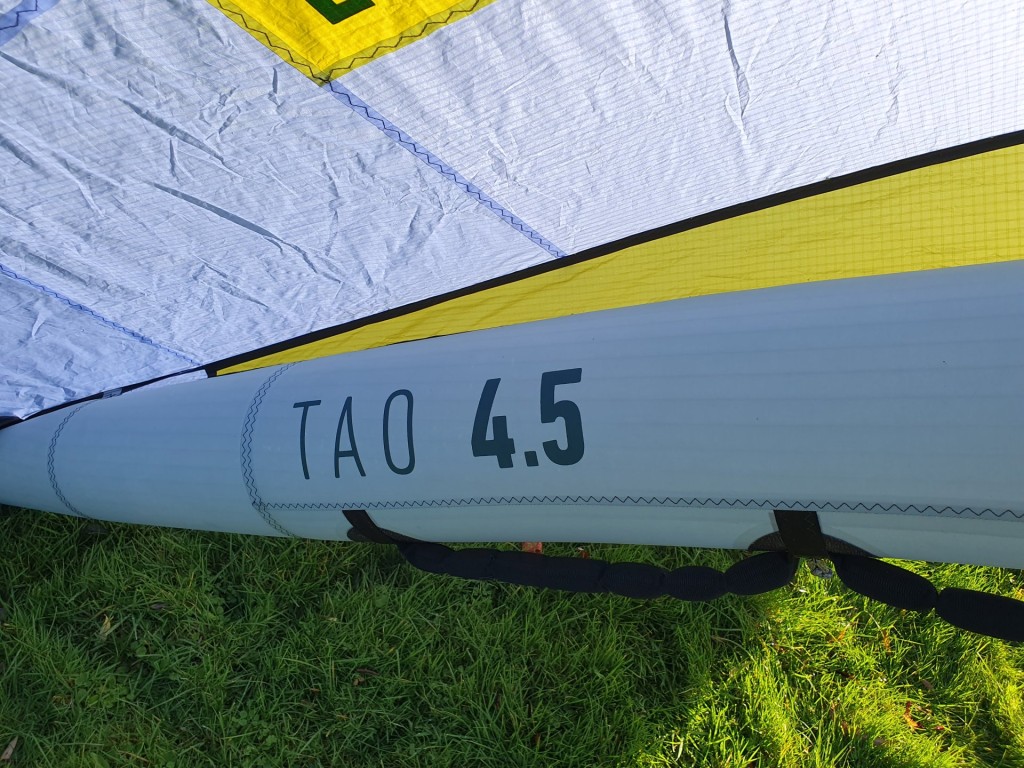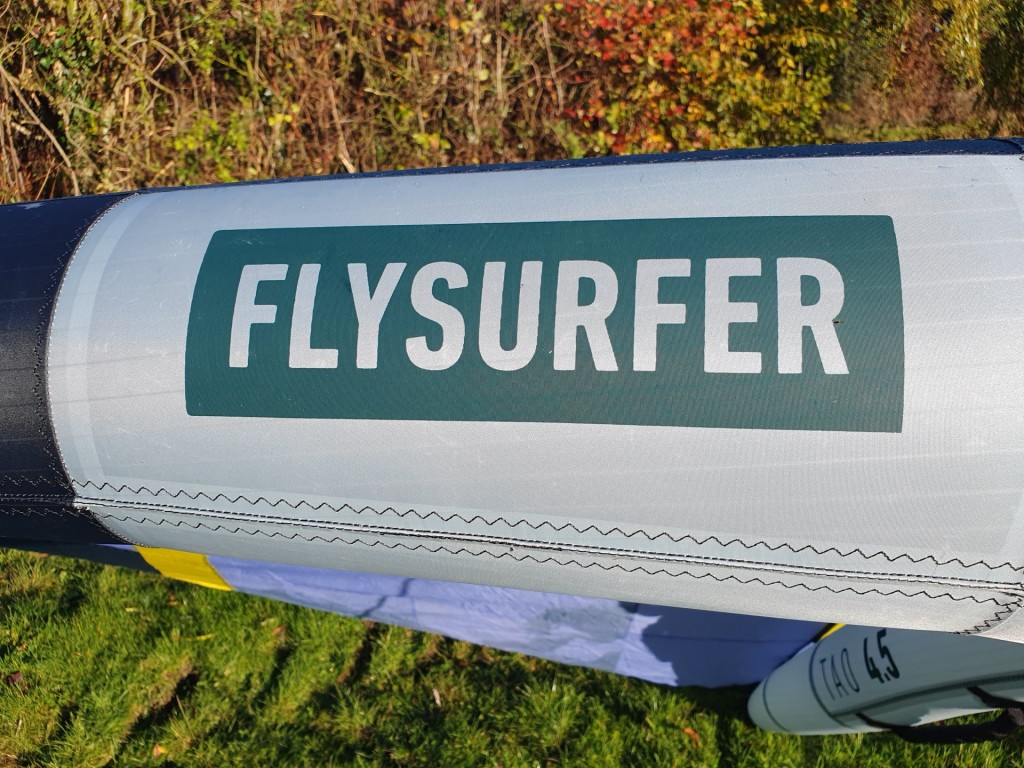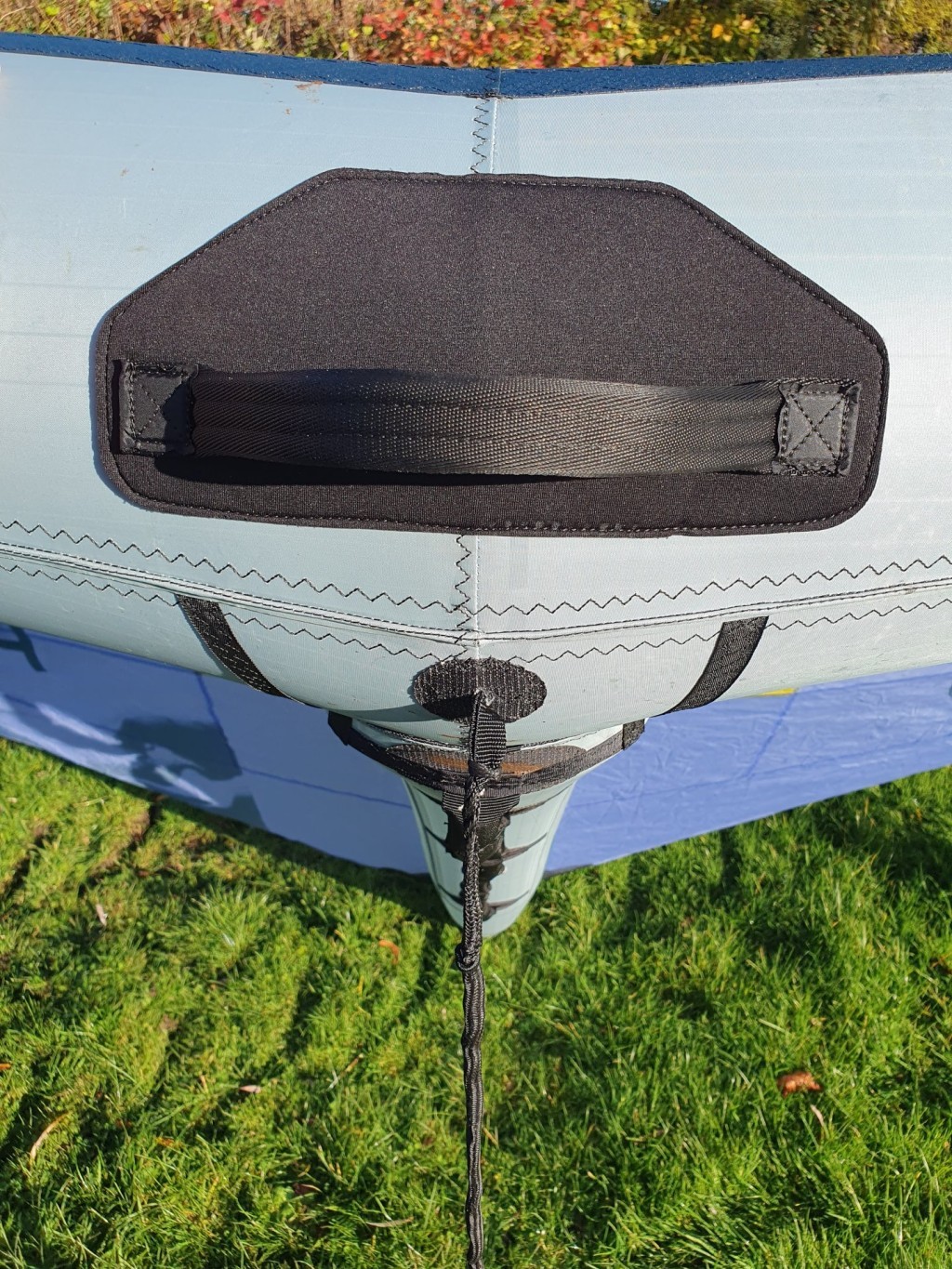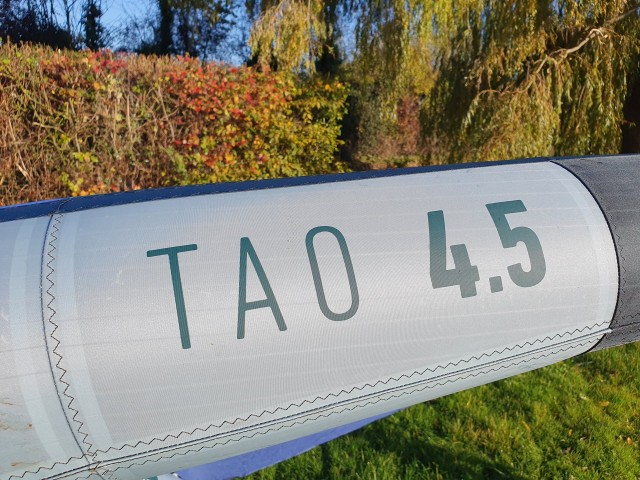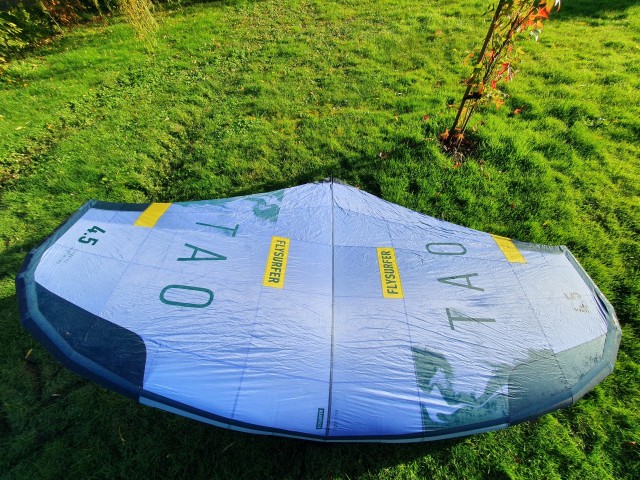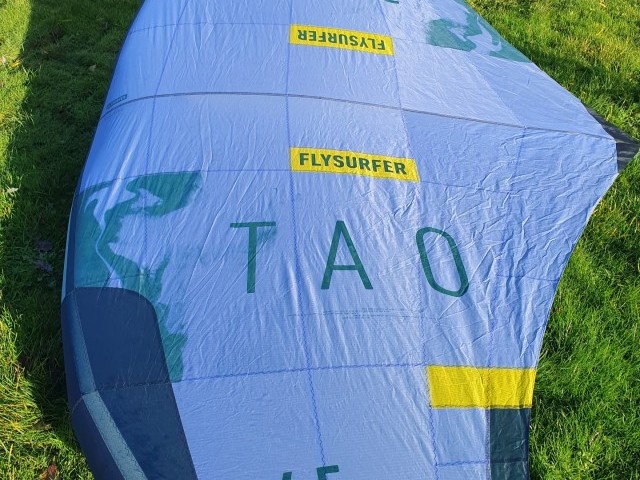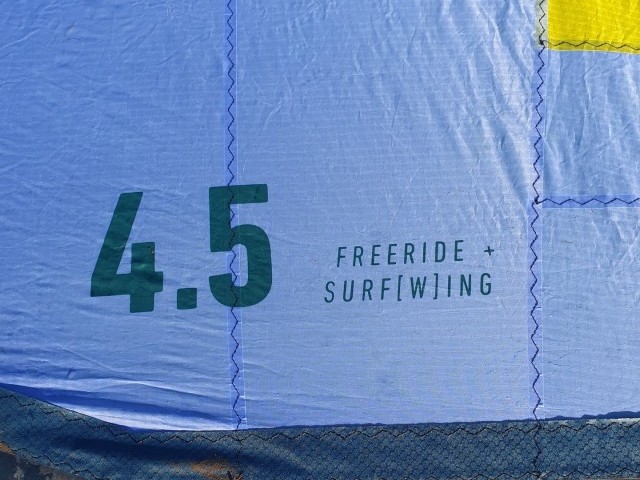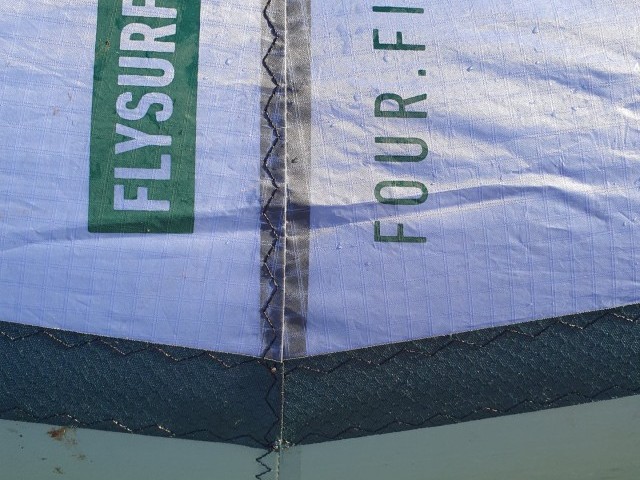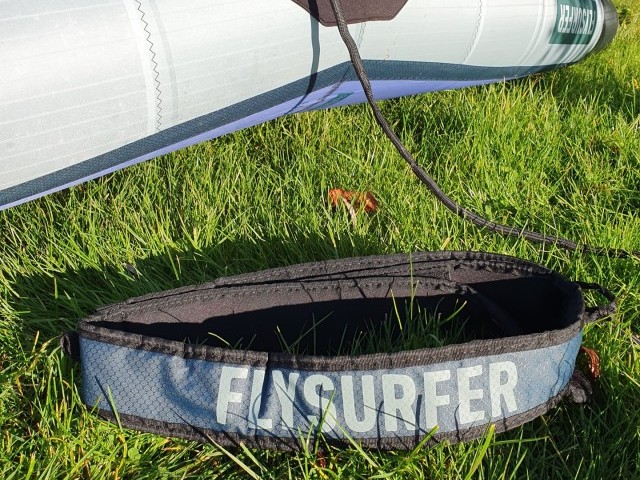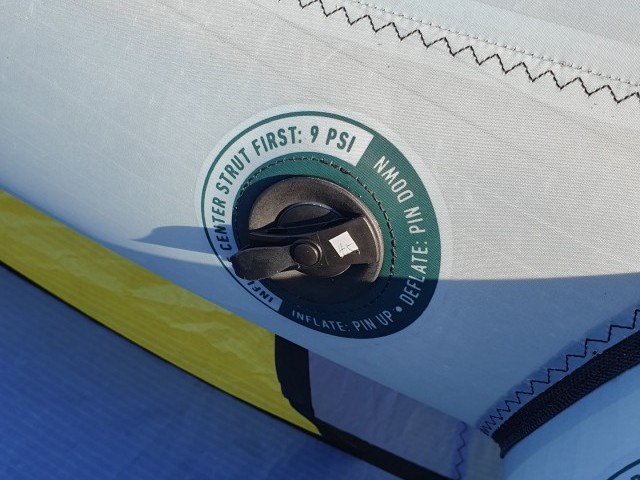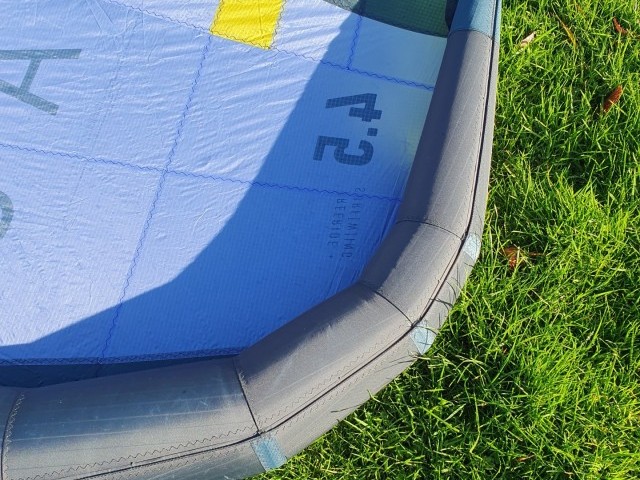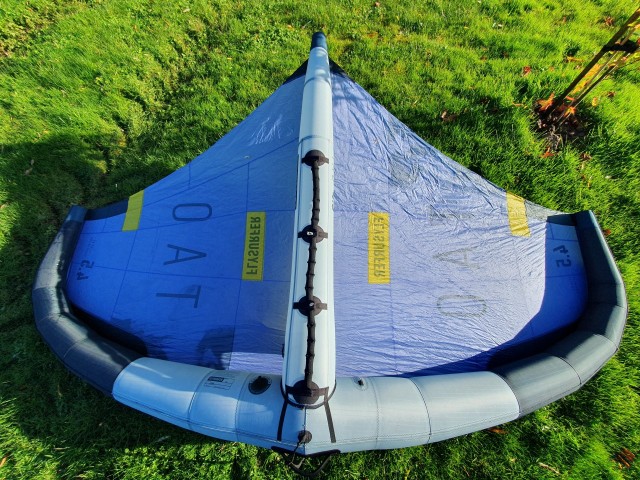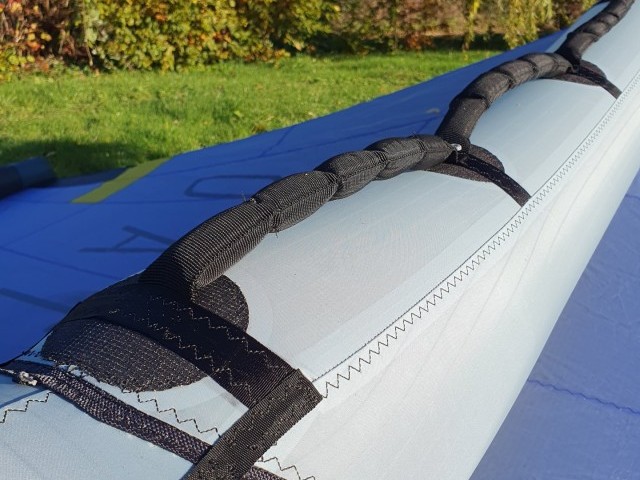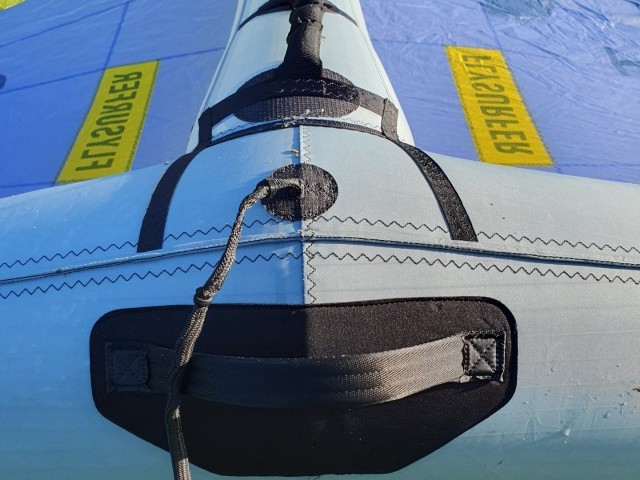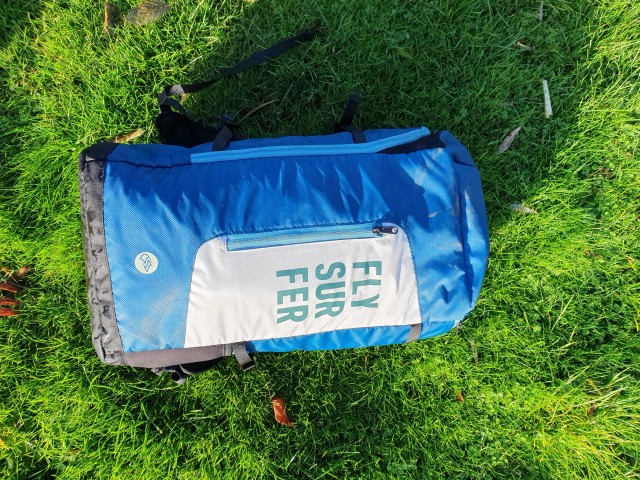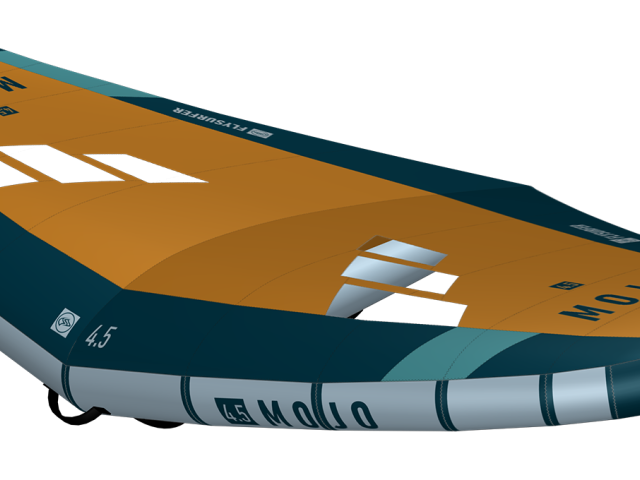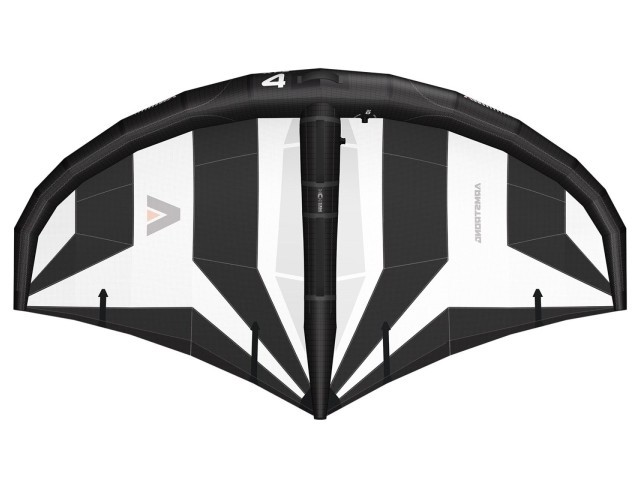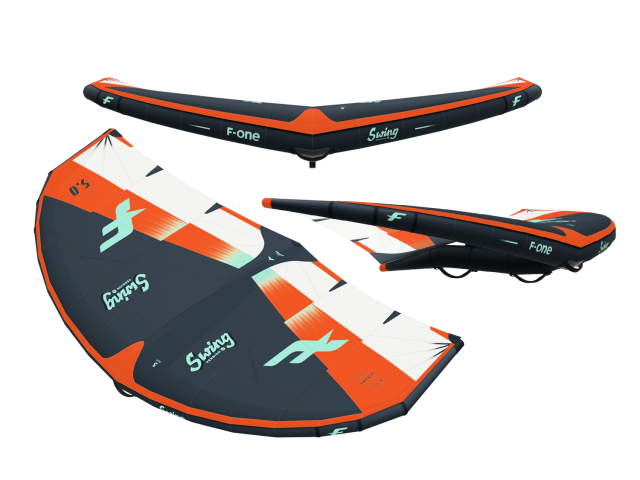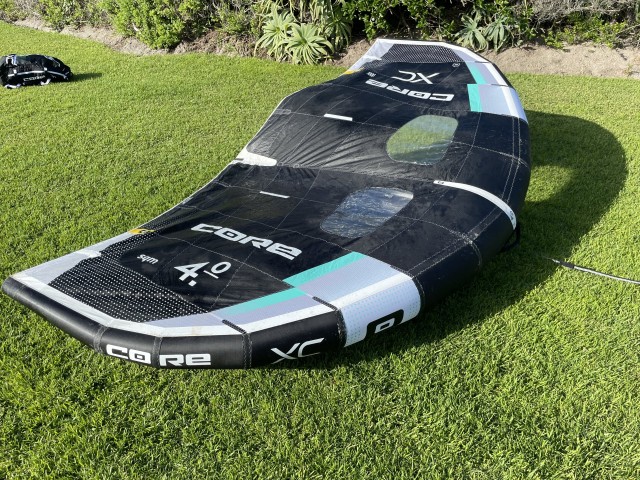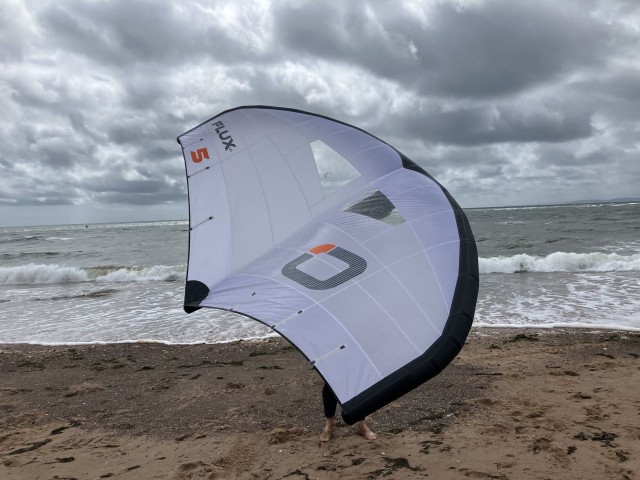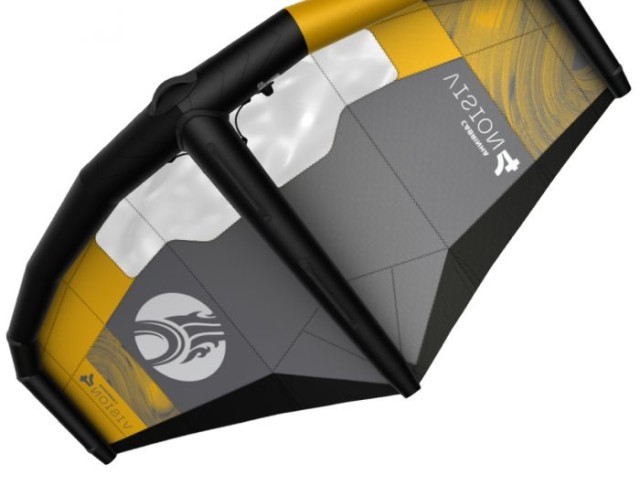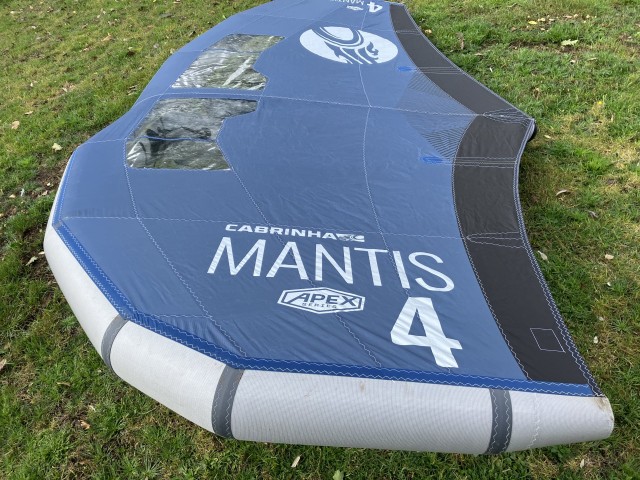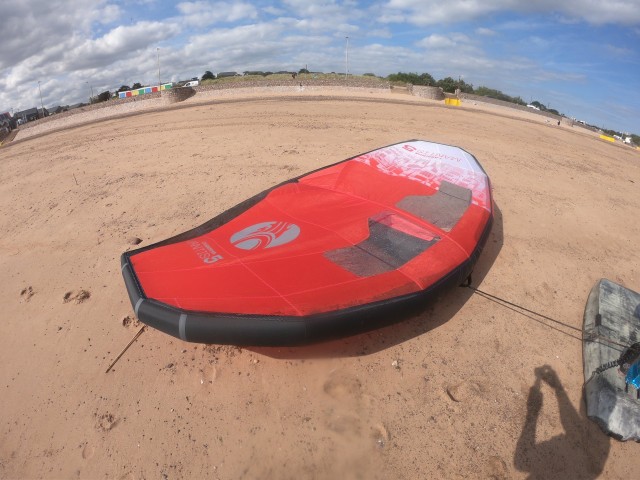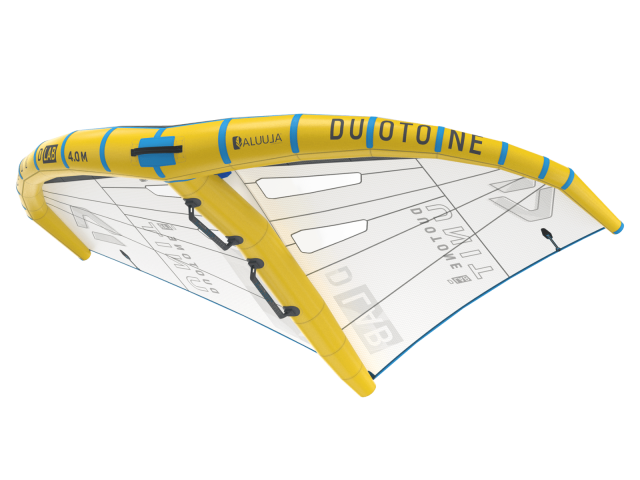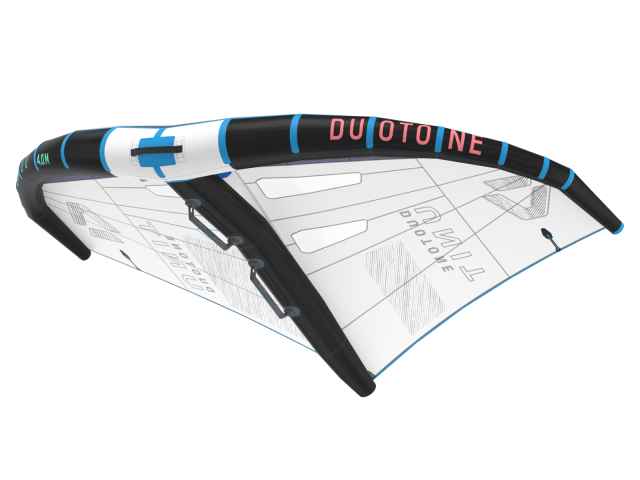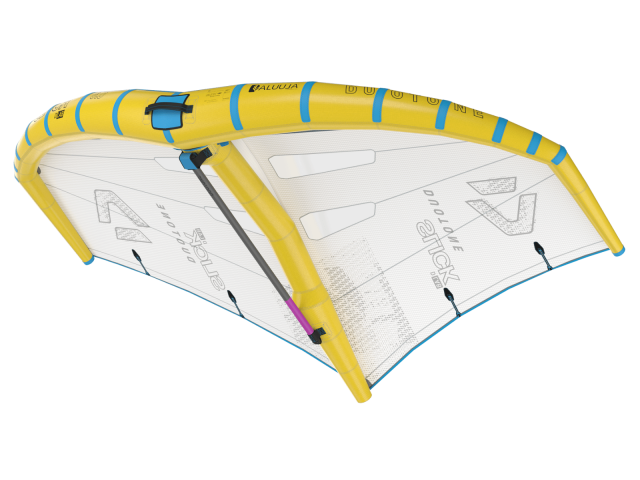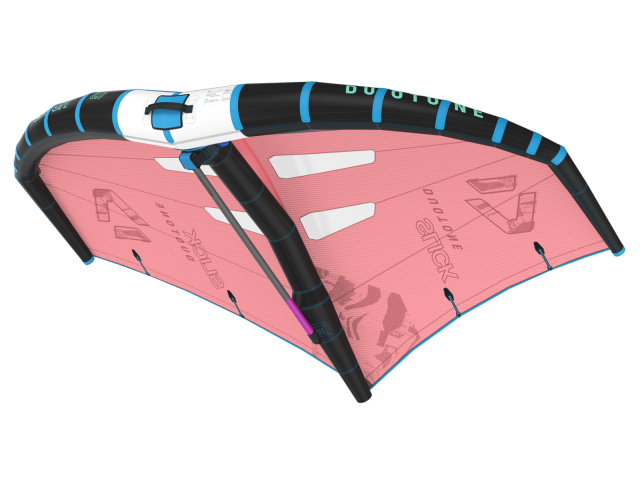The TAO is the new addition to the FLYSURFER lineup and is intended to be a lightweight, ultra-manoeuvrable surf wing. It is designed to feel intuitive to use and provide all of the speed and performance you could require but in a smooth and free-flowing manner. The TAO concept is to carefully balance lift and agility to provide reliable performance to get you into waves without fatigue. Once you start performing tricks or turns on the waves, it also provides an easy turning, responsive, and manoeuvrable wing.
At a Glance
The FLYSURFER TAO is a unique-looking wing packed with interesting design features. The strut and leading edge have independent iSUP valves to inflate the wing. While these both have recommended inflation pressures of 9 psi, the independent valves allow for different inflation pressures if desired, which some riders prefer to optimise the feel and performance of a wing for different wind speeds. When the wing inflates, its ‘bat wing’ outline becomes obvious. The centre strut is quite long and extends well beyond the wingtip. This means that the wing's chord is significantly greater near the centre of the leading edge than near the wingtips. The TAO has a high canopy panel count, especially close to the wingtips, and the seam lines are offset on the last two rows of trailing edge canopy panels. This distributes the reinforcement effect of overlapping material along the seam lines along the trailing edge. Details like this make it clear that some care has gone into maximising the canopy tension of the TAO.
The camber profile of the long strut is well-defined and features very smooth curves without the need for segmentation. This takes work to pull off from a construction point of view. The strut diameter changes non-linearly along its length, and the main canopy is separated from the back of the strut by a piece of sailcloth. The strut is home to three non-slip handles, which are thick, padded, soft, and oval-shaped. Deep ribs have been created in the handles through stitching.
The leash and depower handle were no second thought, and the TAO comes with both wrist and waist leash options. The leash line itself is relatively thin, lightweight, and aerodynamic. It stays out of the way, which is about as good of a review as one can give a leash chord! The waist belt looks and feels very well-built. It has plenty of strong velcro overlap, is streamlined, and sits close to the body but has sufficient padding via a neoprene lining.
The 'streamlined' FLYSURFER construction approach is clear with the TAO, and reinforcement is used sparingly. It is prioritised in the high load (strut to the leading edge) and high wear (leading edge seams close to the wingtips and the end of the strut itself) areas. Overall, the FLYSURFER TAO and its accessories are well-constructed bits of kit!
Sizes: 2.5m, 3.0m, 3.5m, 4.0, 4.5m, 5.2m, 6.2m, 7.0m
On the water
The FLYSURFER TAO delivers on the promise of being an intuitive wing to use. It feels light on the arms and stable, yet requires minimal effort to initiate steering movements. This light steering input feeling is maintained irrespective of whether you are powered up with a lot of backhand pressure or depowered, predominantly loaded on the front hand. As well as the steering inputs feeling light and effortless, they remain controllable even when powered up. This feeling translates into performance when it comes to manoeuvres and wave riding. When you are tacking, for example, the TAO gets from one side to the other quickly with minimal effort from the rider. This effortless change of direction is reassuring when exiting a tack in a new direction. Though you won’t find yourself drawing out tacks very often because of the easy manoeuvrability of the TAO, if you do slow things down, the mid tack ‘upwind glide’ is pretty good.
As well as being easy to use, the TAO is quite playful. If you’re the sort of person who watches videos of the endless tack and gybe variations and wants to try them all, the TAO is an excellent candidate to do so. It is easy to position the wing where you want it, but it also back-wings very well. It’s pretty easy to fly in the back wing position, even allowing for fairly accessible depower in this position, too. There is something about the aesthetic of the bat wing profile of the TAO that makes it look as though the wing tips would be close to the water when riding, but this was not the case once up riding. A concerted effort was required to touchdown a wingtip when trying 360s, for example.
On the depower handle, the TAO felt very light. It is happy to stay low and horizontal and let the rider take the lead. It will rotate as you turn and return as you straighten up with the minimum torque on the wrist. The longer than typical strut helps keep the trailing edge low, which is very beneficial in onshore conditions with good swell when you want to get the wing behind you and prevent wind from getting under the sail and flipping back in front of you.
The strut's design and the TAO's handle positioning are excellent…very ergonomic! Power is distributed equally through the arms, and the wing is naturally controlled, with both arms fairly relaxed when riding long tacks. The thick padding on the handles is comfortable, and with the handles being quite long, micro adjustments are easy. These features mean feedback is dampened slightly and doesn’t have that super direct feeling. This was no issue, in my opinion, as the wing remained controlled at all times because of the light steering input requirements, making for a very comfortable ride.
Overall
The TAO was a fun wing to ride. To me, it felt like a wing built to invoke a certain feeling rather than chase performance metrics. It isn’t a race course winner nor a super duper stiff display of space-age materials; it is a playful wing that encourages you to try new things. It has all the manoeuvrability you need to get as creative as your skills allow. I’d highly recommend trying the TAO, as it is one of those wings that will put a smile on your face from day one.
Videos
For more information visit Flysurfer
Related
By Liam Proctor


